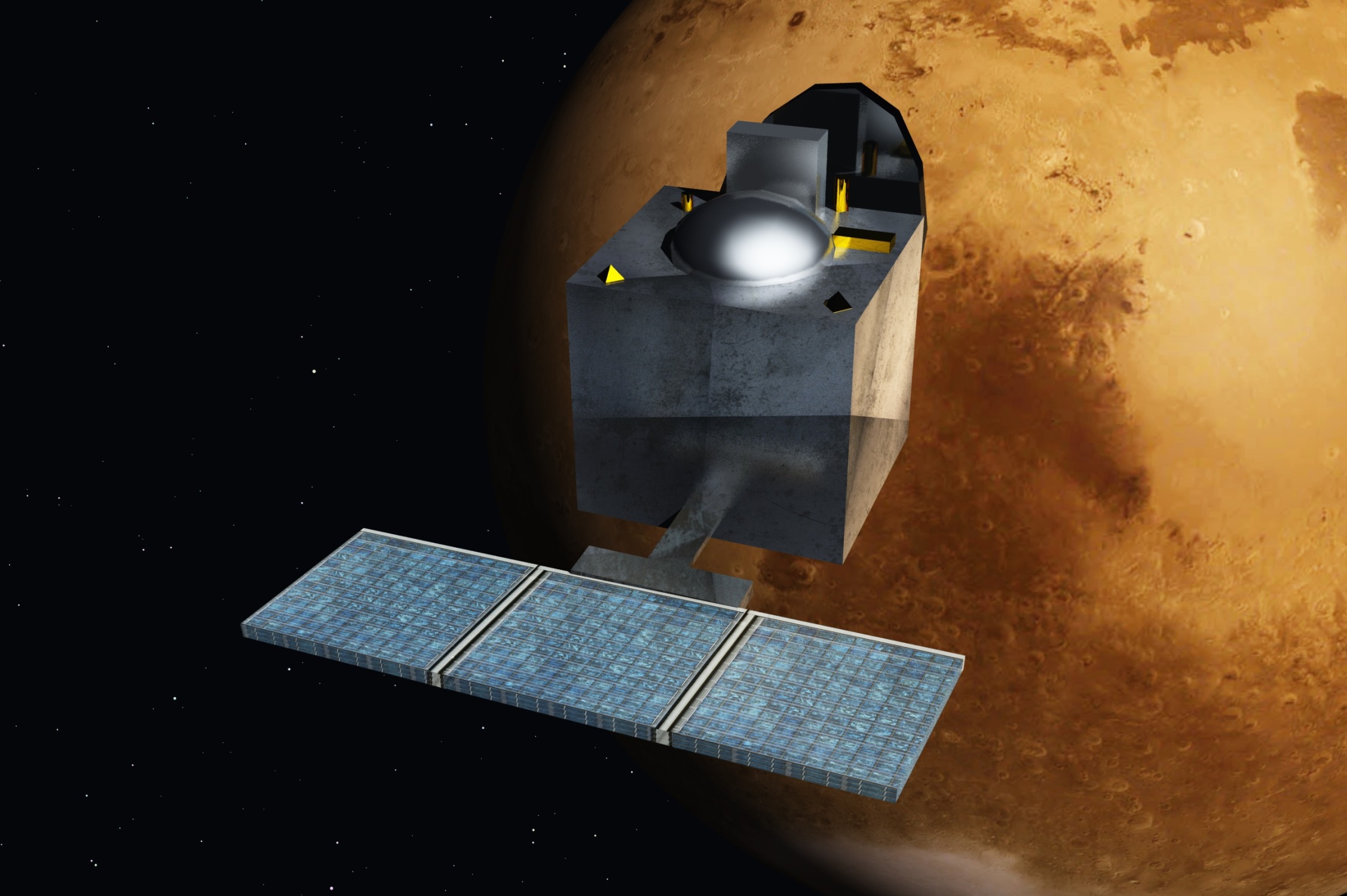
India’s Mars Mission Enter its Final Phase
24/09/2014
India’s Mars Orbiter mission – the Mangalyaan – is now moving into its last and most critical phase. The Mars Orbiter is going to be transferred on 24th September from its current heliocentric or sun-centric orbit and into a Mars-centric one. This is no mean feat, as this phase has defeated many an earlier mission. If it succeeds, India’s ISRO will be the 4th space agency to manage such a feat; the others are US’s NASA, the Russian and the EU space agencies.
As of date, everything seems to be ready for the final push: the series of manoeuvres that have to be carried out by firing Mangalyaan’s on-board liquid fired engines. The telemetric data – data from the Mars probe sent via radio signals – indicates that everything is fine for this final stage. The earlier two stages were launching the Mangalyaan, first into an earth-centric orbit, and later on, raising this orbit such that it moved into sun’s gravitational pull and therefore into a sun-centred orbit.
The Mangalyaan and the NASA’a Maven probe had been sent up at approximately the same time and are set to enter the Mars gravity also at almost the same time; Maven is set to enter Mars gravity on 21st while Mangalyaan on 24th.

Image Courtesy: wikipedia.org
It is true that the scientific objectives of ISRO’s Mars mission are limited. The scientific payload is small – the on-board instruments are only five. The only important scientific objective is the search for methane in the Mars atmosphere, something that the NASA’s Mars Rover Curiosity has not been able to find. It is also true that the project was put together in a hurry to utilise the 2013 window, without which the next window for such a mission would have been early 2016. On the flip side, it is an extremely economic space mission – it cost only $73 million (Rs. 450 crore) as compared to NASA’s Maven that cost $672 million.
If scientific experiments that Mangalyaan will carry out are not novel, why did India launch such a mission at all? To understand this, we need to understand the role that space agencies are playing today. Space launches are not vanity launches. They are very much an arena of commercial competition as satellites launched by space agencies perform a whole range of functions. They map out the global surface, monitor weather, crop areas, pest infestations, and today even traffic on the ground for navigation. They are the basis of delivering a myriad of services to us such as telecommunications, satellite TV, etc. This is apart from the military and security needs that a country may have. Space is no longer a luxury but very much a part of day-to-day activities of a nation and its citizens.
Along with the growth of satellites, is the need for commercial launch vehicles. A number of countries want to launch their satellites but have no rockets to launch them with. The rockets that launch probes such as India’s Mars Orbiter, can also launch a variety of satellites.
How big is the space launch market? Currently its is about $30 billion, almost exclusively with the US and European Union space agencies. It is this market that Russia, China and India are eying. This is the reason that India launched its Mars Mission. It showcases India’s launch capabilities and positions it favourably in the commercial launch vehicle market.
For ISRO therefore, the Mars Mission is less of a scientific mission and more of a technology demonstrator. This is what it says clearly as its objective for the Mangalyaan. If ISRO can successfully perform the complex task of putting a probe into an orbit around Mars, it then establishes its technological prowess. More than the scientific experiments that Mangalyaan will carry out, is its value as a technology demonstrator.
For those who believe that Mars Mission is too expensive for a poor country, they fail to understand the relationship between investments in science and technology and its benefits to the people. Developed countries are richer than developing ones precisely because they have made this investment. Unless we make this investment in science and technology, not just in trying to catch up with developed nations, but in developing cutting edge technology, we will be forced to be net importers of technology. This is a recipe for continued under development and poverty.
There is one caution we must have on ISRO’s priorities. Mangalyaan is based on Indian’s Polar Launch Vehicle (PSLV) technology and not the Geo-Synchronous Launch Vehicle (GSLV) technology, as was originally planned. The failure of the GSLV program till date has been a set-back for ISRO. It has also meant that the Mangalyaan will end up with a highly elliptical orbit and a smaller window to explore the Mars atmosphere as it circles around the Mars. This is also the reason for the smaller payload of scientific instruments that it carries and therefore limited amount of information it will gather.
The key problem with India’s space program is the repeated failures of its GSLV launches. These successive failures have cost India dear – it cannot address the market segment that needs a geo-synchronous, near circular orbit and not a highly elliptical orbit that a PSLV achieves. If India indeed wants to be a major player in the commercial launch vehicle market, it will have to bring its GSLV program back on track. This should be ISRO’s top priority.
Right now, let us keep our fingers crossed for the last and most critical phase of the Mars Mission. And wish ISRO well on its challenging task.